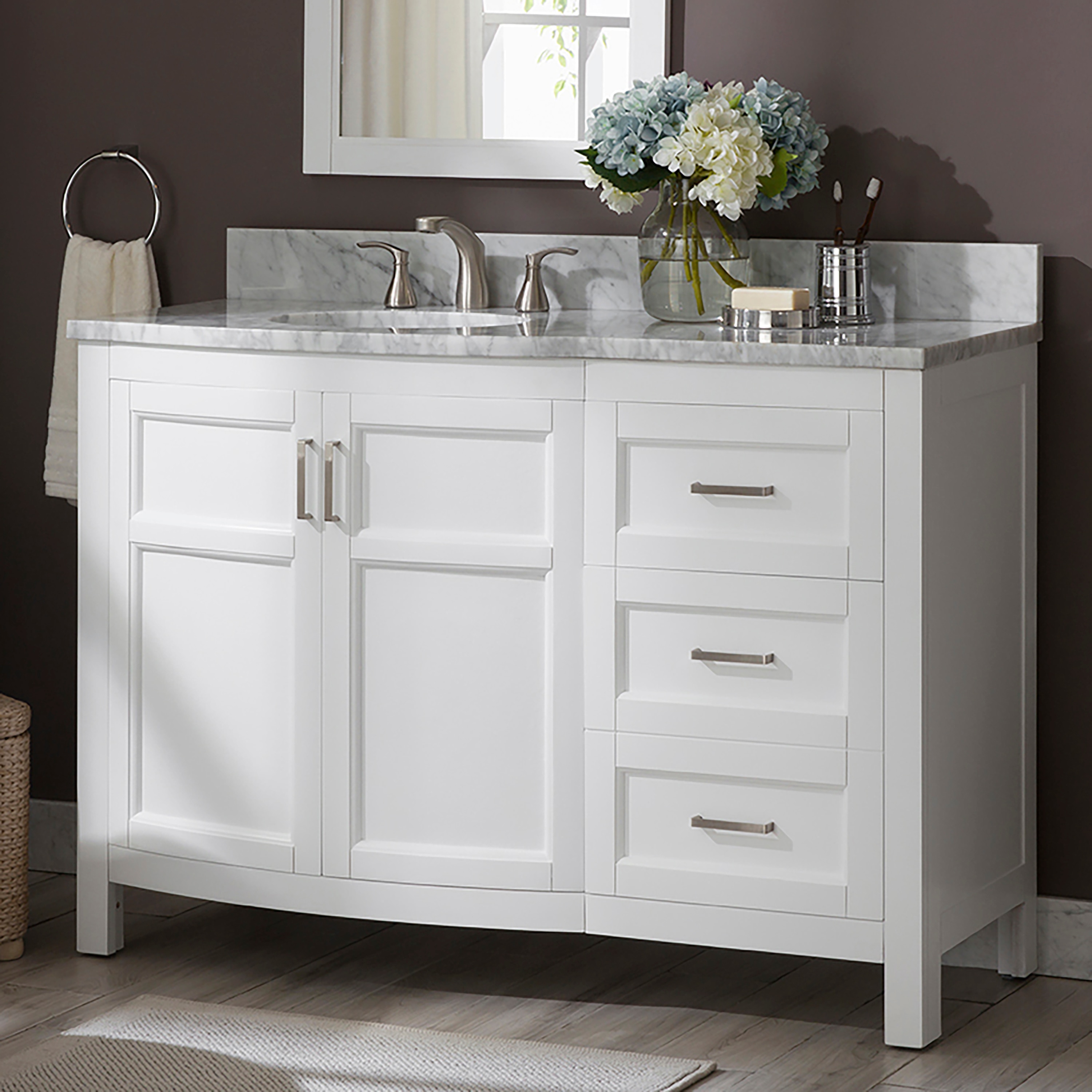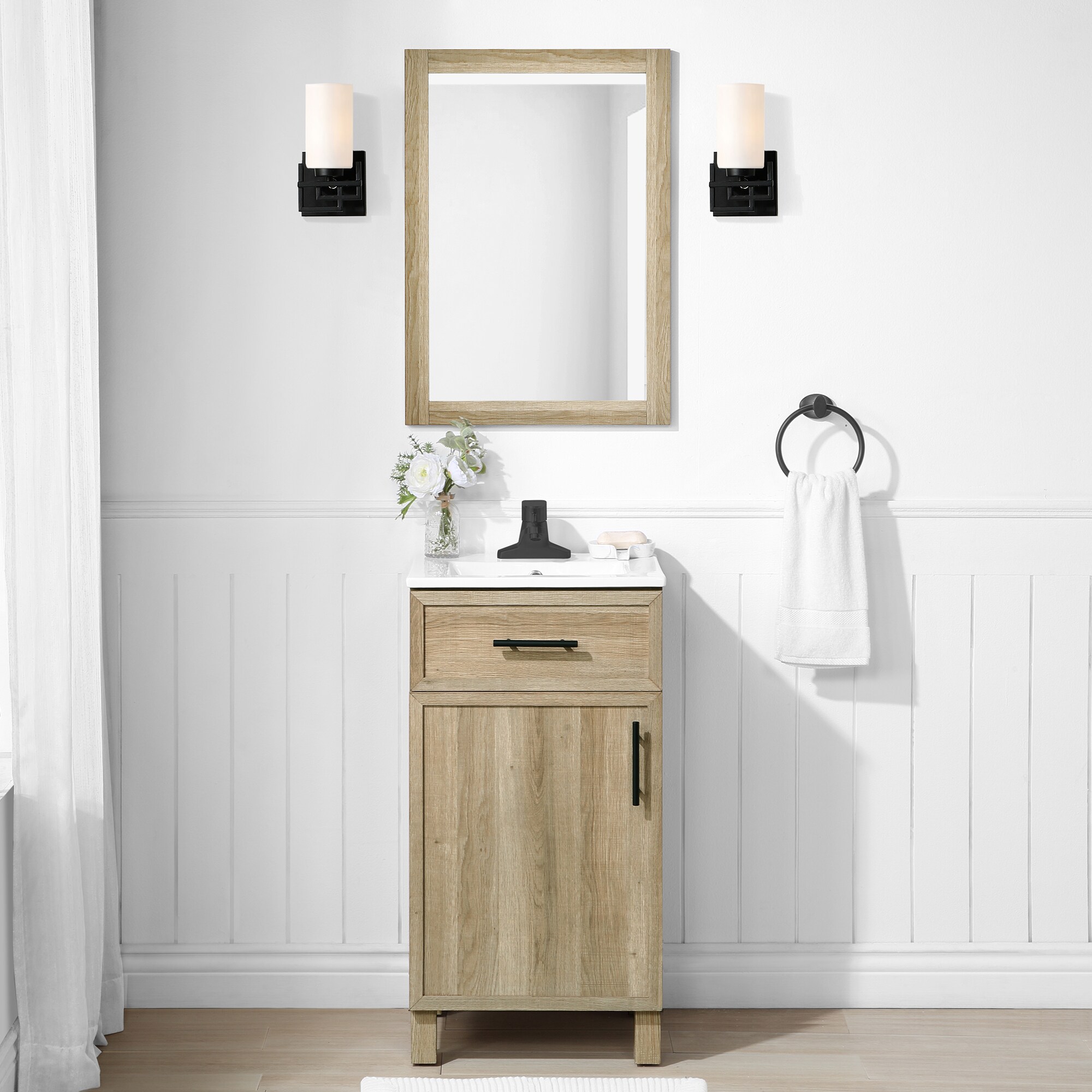Understanding 18×32 Bathroom Vanity Dimensions

The 18×32 bathroom vanity is a popular choice for smaller bathrooms, offering a balance of functionality and space-saving design. This dimension represents the width and depth of the vanity, respectively, providing a practical solution for creating a stylish and efficient bathroom space.
Standard Measurements for an 18×32 Bathroom Vanity
The standard measurements for an 18×32 bathroom vanity include:
– Width: 18 inches (45.72 cm)
– Depth: 32 inches (81.28 cm)
– Countertop Overhang: Typically 1-2 inches (2.54-5.08 cm) beyond the cabinet depth.
– Cabinet Depth: 20-24 inches (50.8-60.96 cm)
– Sink Placement: Usually centered on the vanity top, with a sink bowl width of 16-18 inches (40.64-45.72 cm).
These measurements provide a general guideline for understanding the dimensions of an 18×32 bathroom vanity. However, it’s important to note that specific measurements may vary slightly depending on the manufacturer and model.
Exploring 18×32 Bathroom Vanity Styles

An 18×32 bathroom vanity offers a compact yet functional solution for smaller bathrooms. However, choosing the right style can be crucial in achieving the desired aesthetic and functionality. This section explores popular vanity styles, their defining design elements, and their advantages and disadvantages for your bathroom space.
Traditional Bathroom Vanity Styles
Traditional bathroom vanities evoke a sense of timeless elegance and sophistication. They typically feature ornate details, rich wood finishes, and classic hardware.
- Cabinet Finishes: Traditional vanities often showcase rich wood finishes like cherry, mahogany, or walnut. They may also feature painted finishes in warm tones like cream, ivory, or beige.
- Hardware: Traditional vanities often incorporate ornate hardware such as brass or nickel knobs and pulls with intricate designs. They may also feature decorative hinges and accents.
- Countertop Materials: Marble, granite, or quartz countertops are common choices for traditional vanities. These materials offer a classic look and complement the ornate details of the vanity.
- Sink Options: Traditional vanities often feature undermount sinks, which create a seamless and elegant look. Pedestal sinks or vessel sinks with decorative bases can also be used to enhance the traditional aesthetic.
Advantages: Traditional vanities add a touch of timeless elegance and sophistication to any bathroom. They can create a warm and inviting atmosphere.
Disadvantages: Traditional vanities can be more expensive than other styles. They may require more maintenance due to their intricate details.
Modern Bathroom Vanity Styles
Modern bathroom vanities prioritize clean lines, minimalist designs, and sleek functionality. They often feature bold geometric shapes, smooth surfaces, and a focus on simplicity.
- Cabinet Finishes: Modern vanities typically feature sleek and minimalist finishes, such as high-gloss white, black, or gray. They may also incorporate natural wood veneers with a contemporary finish.
- Hardware: Modern vanities often feature simple and minimalist hardware, such as brushed nickel or chrome pulls with geometric shapes. They may also use concealed hinges for a seamless look.
- Countertop Materials: Modern vanities often feature sleek countertop materials like engineered stone, acrylic, or solid surface. These materials are known for their durability and easy maintenance.
- Sink Options: Modern vanities often feature undermount sinks, which create a clean and minimalist look. Vessel sinks with sleek, geometric shapes can also be used to enhance the modern aesthetic.
Advantages: Modern vanities create a clean, sleek, and sophisticated look. They are often more affordable than traditional vanities and require less maintenance.
Disadvantages: Modern vanities may not be suitable for all bathroom styles. They can sometimes lack the warmth and character of traditional vanities.
Contemporary Bathroom Vanity Styles
Contemporary bathroom vanities blend modern elements with a touch of traditional inspiration. They often feature clean lines, minimalist designs, and a focus on functionality, but with a more relaxed and approachable feel.
- Cabinet Finishes: Contemporary vanities typically feature neutral finishes, such as white, gray, or beige. They may also incorporate natural wood veneers with a light or distressed finish.
- Hardware: Contemporary vanities often feature simple and minimalist hardware, such as brushed nickel or chrome pulls with a slightly more decorative touch. They may also use concealed hinges for a clean look.
- Countertop Materials: Contemporary vanities often feature natural stone countertops like granite or marble, but with a more modern and minimalist approach. They may also incorporate engineered stone or solid surface materials.
- Sink Options: Contemporary vanities often feature undermount sinks or vessel sinks with a more organic or geometric shape. They may also use decorative faucets with a modern design.
Advantages: Contemporary vanities offer a versatile and adaptable style that can complement a wide range of bathroom aesthetics. They are known for their clean lines, minimalist designs, and focus on functionality.
Disadvantages: Contemporary vanities can sometimes be difficult to define, as they blend elements from different styles. They may require more careful planning and consideration to achieve the desired aesthetic.
Farmhouse Bathroom Vanity Styles
Farmhouse bathroom vanities evoke a sense of rustic charm and cozy comfort. They typically feature distressed wood finishes, simple hardware, and a focus on natural materials.
- Cabinet Finishes: Farmhouse vanities often feature distressed wood finishes, such as reclaimed barn wood, weathered oak, or painted wood with a rustic patina.
- Hardware: Farmhouse vanities typically feature simple hardware, such as black or oil-rubbed bronze pulls with a rustic or farmhouse-inspired design.
- Countertop Materials: Farmhouse vanities often feature natural stone countertops like granite or marble, but with a more rustic and distressed finish. They may also incorporate concrete or reclaimed wood countertops.
- Sink Options: Farmhouse vanities often feature undermount sinks, but they may also use vessel sinks with a rustic or farmhouse-inspired design. They may also feature decorative faucets with a rustic finish.
Advantages: Farmhouse vanities create a warm, inviting, and cozy atmosphere. They are known for their rustic charm and focus on natural materials.
Disadvantages: Farmhouse vanities can be more challenging to maintain due to their distressed finishes. They may not be suitable for all bathroom styles.
Choosing the Right 18×32 Bathroom Vanity: 18 X 32 Bathroom Vanity

Selecting the perfect 18×32 bathroom vanity is an exciting step in your bathroom renovation journey. The right vanity can enhance your bathroom’s functionality, style, and overall ambiance. This process requires careful consideration of various factors, including the vanity’s material, storage options, and price range, all while keeping your bathroom size, personal style, and budget in mind.
Comparing 18×32 Bathroom Vanity Features
To guide you in choosing the ideal vanity, here is a comparison table highlighting the key features of 18×32 bathroom vanities.
| Feature | Material | Storage Options | Price Range |
|---|---|---|---|
| Traditional | Wood (Oak, Maple, Cherry) | Drawers, Cabinets, Open Shelves | $500 – $2,000 |
| Modern | Laminate, Acrylic, Solid Surface | Drawers, Cabinets, Integrated Sinks | $400 – $1,500 |
| Contemporary | Metal, Glass, Concrete | Open Shelving, Floating Drawers | $600 – $2,500 |
Key Considerations for Selecting an 18×32 Vanity, 18 x 32 bathroom vanity
- Bathroom Size: An 18×32 vanity is suitable for smaller bathrooms, offering a balance of functionality and space-saving design. Consider the overall layout and ensure the vanity fits comfortably within the available space, leaving enough room for movement and access to other fixtures.
- Personal Style: Your personal style is paramount in choosing a vanity. Whether you prefer a classic, modern, or contemporary aesthetic, the vanity should complement the overall bathroom design. Consider the color, finish, and hardware that best align with your preferences.
- Budget: Establish a realistic budget before starting your search. Prices for 18×32 vanities vary depending on the material, construction, and brand. Be sure to factor in the cost of installation and any additional accessories.
Step-by-Step Guide for Choosing the Perfect 18×32 Bathroom Vanity
- Measure Your Bathroom Space: Accurately measure the available space for the vanity, ensuring there is enough room for comfortable movement and access to other fixtures. Consider the dimensions of the vanity’s footprint, including any protruding features like drawers or doors.
- Determine Your Style: Reflect on your personal style preferences. Do you favor traditional, modern, or contemporary designs? Consider the color palette, materials, and hardware that best complement your bathroom’s overall aesthetic.
- Identify Your Storage Needs: Evaluate your storage requirements. How much storage space do you need? Do you prefer drawers, cabinets, or open shelving? Consider the functionality and accessibility of different storage options.
- Set Your Budget: Establish a realistic budget for the vanity. Consider the cost of the vanity itself, installation, and any additional accessories. Remember that prices vary based on material, construction, and brand.
- Research and Compare: Explore different online retailers and local stores, comparing prices, features, and reviews. Consider the reputation of the brand and the warranty offered.
- Make Your Choice: Based on your needs, style, and budget, select the vanity that best meets your requirements. Consider the vanity’s functionality, durability, and aesthetic appeal.
